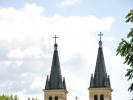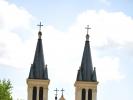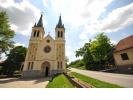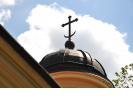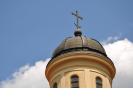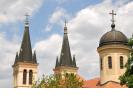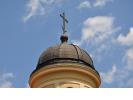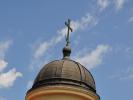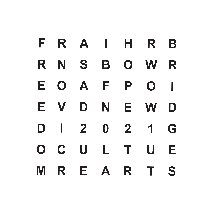The Tekije Church
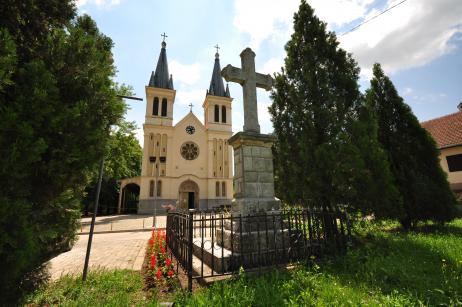
On August 5th, this famous ecumenical Christian temple sees litanies and processions of Orthodox, Catholics and Protestants alike. By doing so, they commemorate a great victory they won over a huge Turkish army in 1716 on the festivities of Our Lady of the Snow. This was also the site of a small towerless medieval chapel, which was later destroyed by the occupying Turks. In its place, the Turks built a minareted wooden mosque and a dwelling place for two dervishes, hence the popular name for the church (tekija - a dwelling place in Arabic). After expulsion of the Turks in 1687, friars from Petrovaradin converted the mosque into a Catholic church. In the mid-18th century the church was enlarged: a wooden tower was erected in the frontispiece, an three altars were added inside. In 1881, the parish priest of Petrovaradin Ilija Okrugić Sremac received a permission from bishop Štrosmajer to build a completely new church, which stands even today. the design was made by an architect from Zagreb, Herman Bole. Nothing from the old design, apart from the all-ecumenical approach, was preserved: the three altars were maintained accommodate the Catholics, Orthodox and Protestants. The rear dome has a cross and a crescent moon on top of it, which is a symbol that the shrine was both Christian and Muslim. The main creator of the church Ilija Okrugić - a native of Sremski Karlovci, a classmate of Branko Radičević, a holder of the Order of Saint Demetrius the Martyr of Syrmia, bestowed upon him by the bishop of Đakovo - is interred within its walls in 1897. The church was completely restored in 1976. The main construction works and designs were done by the architect Antun Drk, while the stained-glass were designed by Milan Stanišić from Sombor.




